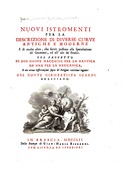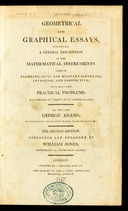If you'd like to start the study of mechanism with a bit of hands-on whimsy, you might wish to take a look at http://www.cabaret.co.uk/, who have been at the center of the contemporary artistic automata movement.
The Cornell University Library hosts the "KMODDL" (Kinematic Models for Design) Digital Library. http://kmoddl.library.cornell.edu/ It contains images of several lovely collections of surviving 19th and 20th century models of mechanisms, and a very good digital library of original texts. (Unfortunately, the licensing terms on their digitizations of these texts does not permit their reproduction. They will therefore survive only as long as Cornell continues funding for this website. Newly-asserted copyright on digitizations of public domain texts, however well intentioned, is the greatest single threat to their survival.)
The Museum of Kyoto University has online a collection of 19th century mechanism models, made in Germany: http://www.museum.kyoto-u.ac.jp/english/materials/mechaniceng.html

Suardi. Nuovi Istromenti.(1752)
Suardi, Giovanni Battista (1711-1767). Nuovi istromenti per la descrizione di diverse curve antiche e moderne e di molte altre che servir possono alla speculazione de' geometri ed all'uso de' pratici : col progetto di due nuove macchine per la nautica ed una per la meccanica, e con alcune osservazioni sopra de' poligoni rettilinei regolari . (Brescia: di Gian-Maria Rizzardi, 1752). This book has been digitized by the Museo Galileo (the Instituto e Museo di Storia della Scienza, IMSS) in Florence. See http://www.museogalileo.it/en/index.html and more specifically http://fermi.imss.fi.it/rd/bdv?/bdviewer/bid=000000300577#/ for this particular volume. Unfortunately, while they do allow a single-file PDF download of the entire work, the PDF so downloaded fails to include the full fold-out plates. It is possible, however, to view the complete plates in their online presentation. This digitization is owned by the IMSS and is not reprinted here (the icon at left is taken from the Google digitization of the University of Michigan copy, noted below).
The Museo Galileo also has a physical implementation of the "Graphic Pen" described by Suardi (the device shown in his Plate XII); see http://catalogue.museogalileo.it/object/SuardisGraphicPen.html
This book has also been digitized by Google, from the copy at the Bavarian State Library (local PDF: suardi-1752-nuovi-istromenti-google-bavarian-state-library.pdf) and the copy at the University of Michigan (local PDF: suardi-1752-nuovi-istromenti-google-mich.pdf. Slightly higher-resolution page images of the Michigan scan are available via The Hathi Trust (ID: mdp.39015035825846); here is a local PDF assembled from those images: suardi-1752-nuovi-istromenti-hathi-mdp-39015035825846-png.pdf. However, all of these Google digitizations, even the Hathi Trust images, do not show the plates completely. This is a recurrent problem with Google digitizations - if there are fold-out plates, they rarely bother to fold them out.
Suardi's "graphic pen" (in the form shown in Plate XIII) was identified with the later "Geometrical Chuck" of Ornamental Turning) at least as early as Proctor's A Treatise on the Cycloid and all Forms of Cycloidal Curves .
Warren Ogden, Jr. mis-identified (I believe) a device by Harry Walton (described in a construction article, "How to Build a Rose Engine with a New Twist," in the December, issue of Popular Science ) as Suardi's geometrical pen. (Odgen was correct, however, in his observation that the device was not in any way a Rose Engine. It would seem, rather, to be much more closely related to a "cranked rod" mechanism such as the "Wondergraph." )

Adams. Geometrical and Graphical Essays. (1792)
Adams, George. Geometrical and Graphical Essays. (London: 1792 and later editions and printings).
The second edition of this book (London, 1797, corrected and enlarged by William Jones), in the copy in the possession of the ETH-Bibliothek, Zürich, has been digitized (very well) as a part of E-lib.ch, the Swiss Electronic Library. See http://dx.doi.org/10.3931/e-rara-1311 or http://www.e-rara.ch/zut/content/titleinfo/367041. The PDF of this digitization is made freely available by them under the following Terms and Conditions: "This PDF file is freely available for non-commercial use in teaching, research and for private purposes. It may be passed to other persons together with these terms and conditions and the proper indication of origin." It is redistributed here in compliance with these terms. There have been at least five other digitizations of various editions of this work (see below), but at present only the ETH version is useful.
Three non-Google digitizations of this work are available at The Internet Archive. However, at present (2012) these are digitizations of the text volume only. The plates were published originally in a separate volume, and neither of the three digitization projects represented here seem to have scanned it. The 1803 third edition has been scanend from an unidentified library in the University of California system. It is at http://www.archive.org/details/geometricalgraph00adamrich. Here are local copies of the PDF version ( geometricalgraph00adamrich.pdf) and the DjVu version ( geometricalgraph00adamrich.djvu). The 1803 third edition has also been scanned by the Unversity of Toronto from its copy. It is at http://www.archive.org/details/geometricalgraph00adamuoft Here are local copies of the PDF version ( geometricalgraph00adamuoft.pdf) and the DjVu version ( geometricalgraph00adamuoft.djvu) The Internet Archive itself has sponsored the digitization of a copy of the second edition (which, curiously, bears the date of 1807 on its title page) from the University of California at Los Angeles copy. It is at http://www.archive.org/details/geometricalgraph00adam Here are local copies of the PDF version ( geometricalgraph00adam.pdf) and the DjVu version ( geometricalgraph00adam.djvu).
Various editions have also been digitized by Google. The 1813 Fourth Edition has been digitized from the New York Public Library copy (local copy of the PDF: adams-1813-geometrical-and-graphical-essays-google-nypl.pdf). and the University of Michigan copy (local copy of the PDF: adams-1813-geometrical-and-graphical-essays-google-mich.pdf). In both cases, this volume contains the text only, not the plates. Google has digitized the separately published plates of the 1803 edition from the copy at the University of Michigan (local copy of the PDF: adams-1803-geometrical-and-graphical-essays-plates-google-mich.pdf). The bibliography of this item is confused in their presentation because the physical volume digitized combines a 1791 [listed by Google as 1792] "Appendix" to Adams (containing tables of data) plus the 1803 volume of plates. The plates themselves start on page 100 of the PDF. However, in making this digitization of a volume containing only plates, they neglected to fold out the plates. It is thus very nearly useless. (The page scans available through Hathi Trust are the same.) Apparently unfolding a plate and taking a photograph of it is an undertaking of such overwhelming difficulty that it is beyond the capabilties of major corporations. Only Swiss state schools seem to be able to manage it.
The items reprinted here from Google Books and the Hathi Trust are in the public domain. Their reprints here remain in the public domain.
The ETH reprint of Adams' Geometrical and Graphical Essays is redistributed here in accordance with its own licensing terms. It is not in the public domain, and is not licensed under the same Creative Commons license as the rest of this Notebook.
All portions of this document not noted otherwise are Copyright © 2012 by David M. MacMillan and Rollande Krandall.
Circuitous Root is a Registered Trademark of David M. MacMillan and Rollande Krandall.
This work is licensed under the Creative Commons "Attribution - ShareAlike" license. See http://creativecommons.org/licenses/by-sa/3.0/ for its terms.
Presented originally by Circuitous Root®
Select Resolution: 0 [other resolutions temporarily disabled due to lack of disk space]